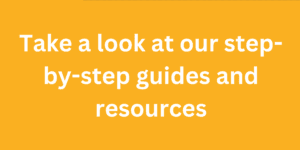Attention-Deficit/Hyperactivity Disorder (ADHD) is a neurodevelopmental condition that affects a child’s ability to focus, manage impulses, and stay organized. According to the Centers for Disease Control and Prevention (CDC), 9.8% of children aged 3-17 in the U.S. have been diagnosed with ADHD. With nearly one in ten students facing this challenge, every classroom will likely include students with ADHD. This makes it essential for educators to understand how to support these students’ unique learning needs.
ADHD can have a wide-ranging impact on a student’s academic performance, affecting not only their ability to concentrate but also their capacity to initiate and complete tasks, follow instructions, and engage with peers. Without proper support, students with ADHD may experience chronic frustration, leading to lower self-esteem and behavioral difficulties. These challenges can disrupt not only their learning but also the classroom environment.
Teachers are critical in creating a healthy and safe environment where students with ADHD can thrive. By implementing targeted strategies, educators can help these students manage their symptoms, build confidence, and improve their academic outcomes.
In addition to academic struggles, students with ADHD often face difficulties in social interactions and emotional regulation. These factors can further complicate their school experience, making it even more important for teachers to recognize the signs of ADHD and offer appropriate interventions.
This article will explore evidence-based classroom strategies teachers can use to support students with ADHD. These classroom management techniques will help improve focus, manage behavior, and promote academic success while contributing to a more inclusive, supportive learning environment for all students.

Recognizing ADHD in the Classroom
Identifying ADHD-related behaviors early is essential for providing the right support and interventions in the classroom. ADHD typically presents through three main behavioral traits: inattention, hyperactivity, and impulsivity. However, it’s important to understand that not all students will exhibit these traits similarly or with the same intensity. Symptoms can vary widely from student to student and based on the environment, making it crucial for educators to observe and respond to individual student needs in the classroom.
Inattentiveness in students with ADHD often appears as difficulty staying organized, losing materials, or showing a lack of interest in classroom activities. These students may struggle to follow through on assignments, skipping steps or becoming easily distracted by their surroundings. We may observe these students ‘daydreaming’. Teachers can support inattentive students by providing clear, written instructions and offering gentle prompts or reminders to help them stay focused. Regular check-ins can also ensure that students understand and follow the necessary steps to complete their work.
Hyperactivity is another common trait of ADHD. Students may find it challenging to stay seated or remain quiet during lessons. They may fidget, talk out of turn, or feel the need to move frequently. Rather than viewing this behavior as disruptive, teachers can integrate movement breaks or allow standing desks and fidget tools to channel excess energy. Providing structured opportunities for movement helps students with hyperactivity stay engaged and focused without becoming a distraction.
Impulsivity can manifest in behaviors such as interrupting conversations, blurting out answers, or acting without thinking. These impulsive actions may strain peer relationships, as other students may perceive the behavior as intrusive or rude. Educators can help by setting consistent boundaries and providing immediate, constructive feedback. Occasionally, students blurt out of turn out of concern they may forget their ideas. Providing each student a notepad to write down their thoughts helps reduce the cognitive load on their working memory. Teaching self-regulation techniques, such as waiting to speak and reminders with hand gestures, can be instrumental in cueing impulsive students to demonstrate better social and emotional skills.
Understanding how ADHD behaviors present in the classroom allows teachers to respond proactively and with empathy. Students with ADHD experience higher rates of criticism than their peers, which can make them stigmatized or sensitive to negative feedback. By recognizing these traits early, educators can adapt their teaching methods and classroom strategies to support each student’s needs, promoting a more inclusive and supportive learning environment.
3 Key Classroom Management Strategies
Managing a classroom that includes students with ADHD requires careful planning, structure, and flexibility. These classroom strategies can help create a supportive environment where students with ADHD feel understood and are given the tools to succeed.
1. Create a Structured Environment
Students with ADHD often thrive in environments that offer consistency, routine, and clearly defined expectations. Predictability helps reduce anxiety, especially during transitions between activities.
Teachers can implement this classroom strategy through the following:
- Predictable Routines: Establishing a daily routine provides a structure that students with ADHD can rely on. A consistent schedule helps them know what to expect, which reduces feelings of uncertainty. Visual schedules, classroom timers, or auditory cues, such as a bell or chime, can signal transitions and help students adjust between tasks without feeling overwhelmed.
- Clear Expectations and Visual Cues: It’s essential to set clear, concise rules that are easy to understand. Visual reminders, like posters or charts, can reinforce expectations without overwhelming students with too many verbal instructions. For example, displaying a “steps to complete an assignment” chart gives students a visual reference to stay organized and on track, helping them maintain focus throughout the task.
- Reminders of what TO DO instead of what NOT to do. When any student shows target or undesirable behavior, helping the student understand what is expected instead of those what are called ‘replacement’ behaviors is key to learning to their understanding. Rewarding students and noticing when the replacement behaviors are demonstrated helps them to grow.
Providing structure not only helps students with ADHD stay focused but also fosters a more organized and calm learning environment for everyone. This classroom management strategy benefits all students.
2. Utilize Positive Reinforcement
Students with ADHD often respond more effectively to immediate, positive feedback than to delayed praise. By reinforcing their efforts in the moment, teachers can help build their confidence and encourage positive behavior.
This particular classroom strategy for teaching students with ADHD can include:
- Immediate Praise and Rewards: Offering immediate, specific praise when a student completes a task or demonstrates positive behavior can be highly motivating. A rewards system, such as earning points toward privileges like extra break time or choosing a classroom activity, can encourage students to stay focused and work towards attainable goals. This helps maintain student motivation, especially during more challenging tasks.
- Reinforce Effort, Not Just Outcomes: For students with ADHD, progress may not always be reflected in perfect outcomes, but their effort to stay on task or improve behavior should be recognized. Praising their determination and perseverance reinforces that effort is valuable and builds resilience over time.
By focusing on effort and achievement, teachers can help students with ADHD feel more confident and supported, boosting their overall engagement in learning.
3. Incorporate Breaks and Movement
Students with ADHD often struggle to sit still for extended periods, making movement and short breaks essential to effective classroom management.
To bring this classroom strategy to their students with ADHD, teachers can utilize:
- Frequent Breaks: Short, structured breaks throughout the day allow students to release energy and reset their focus. A brief walk, stretching exercises, or simple in-class activities like “jumping jacks” or “desk yoga” provide a necessary outlet for physical movement, helping students refocus once they return to their tasks. Breaks don’t have to be lengthy—just a few minutes can make a significant difference in helping students regain their attention.
- Movement-Based Learning: Incorporating movement directly into lessons can keep students with ADHD engaged while addressing their need for physical activity. Activities such as rotating between learning stations, interactive group tasks, or incorporating hands-on learning tools allow students to stay active while still participating in the lesson.
By integrating movement into the classroom, teachers can help students with ADHD manage their energy in ways that enhance focus and learning rather than creating distractions.

3 Instructional Techniques for Teaching Students with ADHD
In addition to implementing effective classroom management, teachers should adapt instructional strategies to ensure that students with ADHD stay engaged and can process information efficiently. Tailoring these techniques to meet their needs helps enhance learning outcomes.
1. Provide Clear, Concise Instructions
Students with ADHD may struggle with complex or lengthy instructions, often becoming overwhelmed or confused. Teachers can improve students’ ability to stay on track by simplifying directions and breaking tasks into smaller steps.
In the classroom, this can look like:
- Step-by-Step Guidance: Breaking assignments into manageable chunks allows students to focus on one step at a time. Instead of presenting an entire project at once, teachers can divide it into smaller tasks, offering instructions incrementally. Visual aids such as checklists or flowcharts help students track their progress, reducing confusion and keeping them organized.
- Dual Instruction (Verbal and Visual): Offering verbal and visual instructions can cater to different learning styles and reinforce the presented information. For example, pairing spoken directions with written instructions or visual aids, like diagrams or bullet points, helps students absorb and remember what they need to do. This dual approach prevents miscommunication and helps students with ADHD understand and follow through on tasks.
By providing clear, step-by-step guidance and using multiple forms of instruction, teachers can help reduce overwhelm and make learning more accessible for students with ADHD.
2. Engage Multiple Senses
Students with ADHD often benefit from multisensory learning experiences, which keep them engaged and improve information retention. Integrating hands-on, visual, and auditory elements into lessons can make learning more interactive and enjoyable.
To bring this learning technique to the classroom, teachers can use:
- Hands-On Activities: Tactile learning, such as using manipulatives in math, building models, or participating in group projects, allows students to stay physically engaged with the material. These activities provide an alternative to passive listening, making lessons more dynamic and helping students with ADHD maintain their focus for longer periods.
- Visual and Auditory Elements: Adding videos, diagrams, music, or sound cues into lessons engages multiple senses at once, reinforcing the material. For example, educational videos or visual mind maps can help students retain information more effectively than traditional lecture-based teaching alone.
By incorporating multisensory learning techniques, teachers can cater to the diverse needs of students with ADHD, ensuring they remain engaged and connected to the material in meaningful ways.
3. Flexible Seating Options
Flexibility in seating arrangements can greatly improve the focus and comfort of students with ADHD. Different seating choices give students the freedom to choose the environment that best suits their individual learning needs.
In practice, teachers do this by providing the following:
- Different Seating Choices: Offering various seating options—such as standing desks, wobble chairs, or quiet corners with floor cushions—helps students with ADHD manage their energy levels while maintaining focus. Flexible seating can reduce the discomfort of sitting still for extended periods, allowing students to move freely in ways that aid concentration without disrupting the classroom.
Multiple seating choices give students with ADHD control over their learning environment, helping them feel more comfortable and better able to concentrate on their work. Other students will also find this practice enjoyable, boosting classroom morale.

Individualized Support for Students with ADHD
While general classroom strategies can help many students with ADHD, some require more personalized interventions to meet their specific needs. Tailored support can make a significant difference in helping these students thrive academically and behaviorally.
1. Behavior Intervention Plans (BIPs)
Creating a Behavior Intervention Plan (BIP) can provide structured, targeted support for students whose behaviors may disrupt their learning or the learning environment. A well-designed BIP outlines specific behavioral goals and offers strategies to encourage positive behavior.
BIPs include:
- Collaboration with Specialists: Developing a BIP often involves working closely with school psychologists, counselors, or special education teachers. Together, educators can identify behavioral triggers and create interventions that target those behaviors. The plan may include positive reinforcement, such as rewards or privileges for meeting behavioral goals, and clear consequences for negative actions.
- Regular Monitoring: A BIP should be dynamic and evolve as the student’s behavior and needs change. Regular assessments allow teachers and specialists to adjust strategies, ensuring that the plan addresses areas of concern while supporting the student’s growth. Flexibility is key to the success of a BIP, as it allows for ongoing improvement and adaptation.
By using BIPs, educators can provide students with ADHD with the behavioral structure they need to succeed in the classroom while minimizing disruptions for themselves and their peers. Student engagement with BIPs can also be helpful, as they can monitor their own behavior to increase self-awareness, notice when they may be triggered or tempted to act impulsively and choose an alternative action.
2. Leveraging Technology
Assistive technology can play a crucial role in helping students with ADHD stay organized, manage their time, and maintain focus. Using digital tools can simplify task management and improve concentration.
Examples of this include:
- Task Management Apps: Apps like Google Keep, Todoist, or Microsoft To Do help students break down larger assignments into smaller, manageable tasks. These digital tools allow students to set reminders, prioritize tasks, and track deadlines, which reduces the feeling of being overwhelmed. By visually organizing tasks, these apps promote a sense of control over schoolwork and foster independence.
- Focus Tools: Apps like Forest or Pomodoro timers can help students with ADHD maintain focus during study sessions. These apps use techniques like visual timers or reward systems to encourage concentration for set periods, followed by short breaks. This structured approach helps students manage distractions and stay engaged with their work for longer durations.
Integrating technology into daily routines provides students with ADHD an effective way to manage their workload and improve focus, supporting their academic and personal development.
3. One-on-One Support and Mentoring
Many students with ADHD benefit greatly from individualized attention and mentorship. One-on-one support can provide the encouragement and guidance needed to address academic challenges and build self-confidence.
This can include:
- Mentorship: Pairing students with a mentor—whether a teacher, counselor or even a peer—gives them consistent guidance and support. Mentors can check in regularly to discuss academic progress, address behavioral concerns, and offer strategies for overcoming challenges.
- Regular Check-Ins: Consistent one-on-one interactions can help students with ADHD stay on track and feel more supported in their academic journey. These check-ins provide opportunities to reinforce positive behaviors, identify struggles early, and adapt learning strategies to meet evolving needs.
Mentoring boosts academic success and helps students with ADHD develop stronger relationships and self-management skills, ultimately improving their overall well-being.
4. Accommodations
Students with ADHD often benefit from accommodations to remove barriers to their performance. Examples of accommodations in the school environment may include extended time, preferential seating, a visual marker, timers, headphones, and small group or individual testing in a distraction-free environment. Students with ADHD and those without may benefit from written instructions, tasks broken down into smaller parts, or movement breaks. Common classroom practices assist all types of learners, including providing study guides, copies of notes, and written instructions, thus reducing the cognitive load that typically tax working memory.
These accommodations ‘level the playing field’ or enable students with ADHD to show their knowledge without allowing testing-taking environments to hinder their performance.
Academic Coaching for Students with ADHD
Academic coaching is a popular and effective form of support that provides students with personalized strategies to help them succeed both in and out of the classroom. Coaches work closely with students to build crucial executive function skills like time management, organization, and self-regulation—areas where students with ADHD often need additional guidance. This tailored approach goes beyond traditional tutoring by helping students develop long-term habits that foster academic independence.
Effective Students provides comprehensive academic coaching services tailored to each learner’s unique needs. These programs focus on immediate academic improvement and equipping students with strategies to manage workloads, stay motivated, and overcome challenges. Through one-on-one coaching and targeted workshops, the approach empowers individuals to take control of their education and develop essential skills for long-term success.

Creating an ADHD-Friendly Learning Environment
Supporting students with ADHD requires a combination of empathy, flexibility, and evidence-based strategies. By understanding their unique challenges, teachers can create structured yet adaptable classrooms where students with ADHD can thrive academically and socially. Minor adjustments, like incorporating movement, using visual aids, and providing individualized support, can make a significant difference in helping these students stay focused and engaged.
Flexibility and collaboration are crucial to success. Teachers can ensure that students receive consistent, targeted support by working closely with specialists and maintaining open communication with parents. Behavior Intervention Plans, assistive technology, and personalized learning strategies are most effective when reinforced by a team effort.
If you’re looking for additional resources to support students with ADHD, Effective Students can help. Our academic coaches provide tailored strategies and interventions to meet each student’s needs. Contact Effective Students today to learn how we can empower your child to succeed academically and personally.

